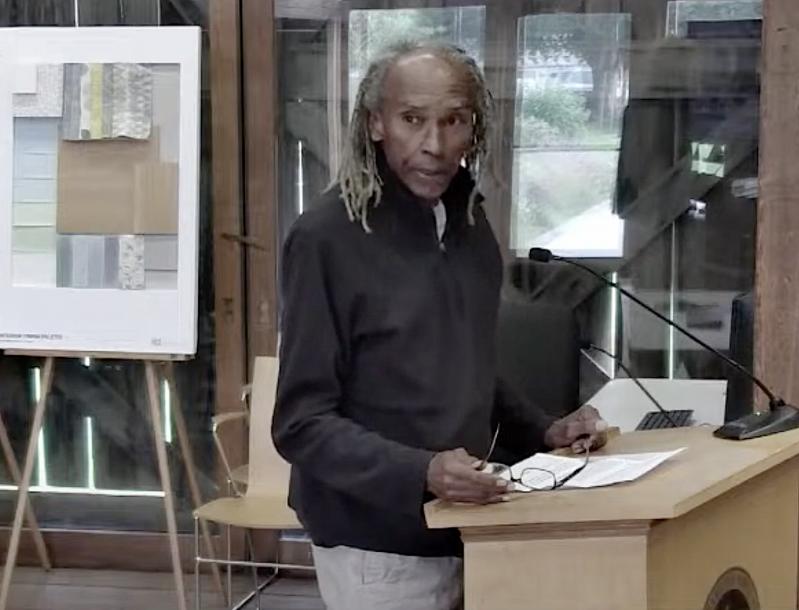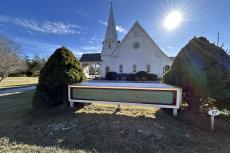A proposal to increase density on senior-citizen-only affordable housing developments in East Hampton Town was met warmly at a town board hearing last week. Nine residents spoke in favor, while no one spoke directly against it. The town now allows eight units per acre, but is looking to increase that to 12 units per acre for developments that are for older people.
Ultimately, even if the law is passed, based on properties already covered by an affordable housing overlay, the change may yield only around 40 new apartments, Eric Schantz, the director of housing and community development, told the town board in April. “The demand is nearly four times greater than the supply,” Mr. Schantz said at the time.
“This proposal, it’s not going to empty the waiting list,” Samuel Kramer, the chairman of the town planning board, said at a July meeting when the legislation was discussed. “I’m supportive, even if it will have minimal impact,” agreed Ed Krug, a fellow board member. The planning board indicated broad support for the proposal with a small caveat, voiced by Louis Cortese, that it may give senior housing developments a competitive advantage over non-senior housing developments, which would still be restricted to eight units per acre.
Mike Desario, a former chairman of the senior housing developments of Windmill I and II and St. Michael’s, said he has experienced firsthand how difficult it was to bring such projects to fruition. “It took five to six years to get a shovel ready project and then another year to build,” he said. Increasing density could speed the process and relatively quickly provide dozens of seniors with safe and affordable places to live.
“I feel this is my final home,” said Carol Sherman, an 88-year-old resident of Windmill Village. “I am safe, secure, and grateful.” The rent subsidies she has received for the last two decades left her feeling “relieved” and free from victimization by landlords who either changed lease terms or sold their properties, she said. She indicated that upon her death she planned to leave a gift for Windmill Village, and she encouraged the town to take care of “the next wave of seniors who will need a home.”
Katy Casey, the executive director of the East Hampton Housing Authority, supported the legislation. “There is empirical evidence that seniors tread more lightly upon the earth,” she said. “I know from professional experience that many of our seniors would prefer to live in age-restricted properties, but there simply are not enough opportunities. I’m confident that if the town increased the number of age-restricted housing units, a portion of the housing authority residents would apply to live there, potentially opening up a multifamily unit for a non-senior household.”
A resident of St. Michael’s who gave her name only as Irma, a deacon at the Lutheran Church in Amagansett, said housing “Is something that is fundamental for a human being. To be fed, to be healthy, but also to have a roof over your head. I have a roof over my head, and I couldn’t be more grateful, because I am safe.” Leonard Green spoke in favor of the legislation, but also pivoted to thank Windmill Village for considering sustainable landscaping options. “I don’t know how to say this more simply: We need trees. We need native vegetation. They’re irreplaceable elements of the ecosystem that clean and protect our ground and surface waters from the abundant toxins we giddily pump into our environment.”
Kirby Marcantonio, who is a general partner at 350 Pantigo, the long-ago Stern’s department store property and one of the parcels that could benefit from the legislation, made it clear that senior housing wouldn’t be built there. “We have no plans for senior citizen housing. We know it is needed, but so is work force housing.” He asked the board to consider increasing the density at work force housing developments as well.
Carolyn Chichester, a resident of Windmill II for two decades, described in touching detail the path that took her into the affordable housing development. For years she lived “in a shack on a farm in Wainscott.” However, the farmer subdivided and sold lots “and I’ve been scrambling ever since.” In her 50s and 60s that was fine, but “now that I’m in my 70s, I lost the ability to support myself working. In the last five years I have spent every penny I had, just for rent. I don’t go out. I don’t eat out. I don’t go to events. I don’t travel. My car has 150,000 miles on it. I just pay rent.” She was on the Windmill waiting list for 15 years before she recently gained an apartment there.
“I’m safe as never before. The gratitude I feel every day is like the sun shining on my face and my plants. If you approve this, you will not be hurting East Hampton. You will be spreading the sun and peace I feel to our most vulnerable and to what I think, should be our most venerable population,” she said.




